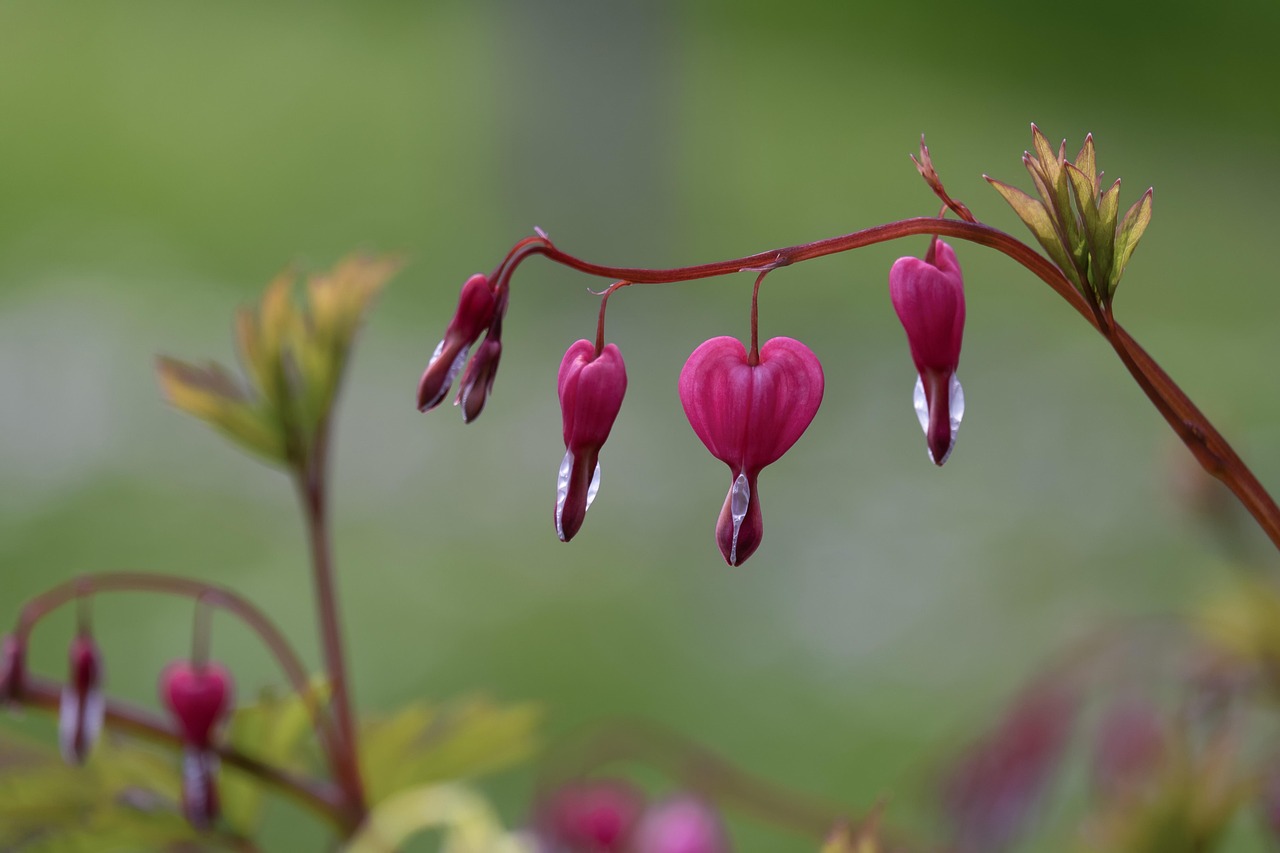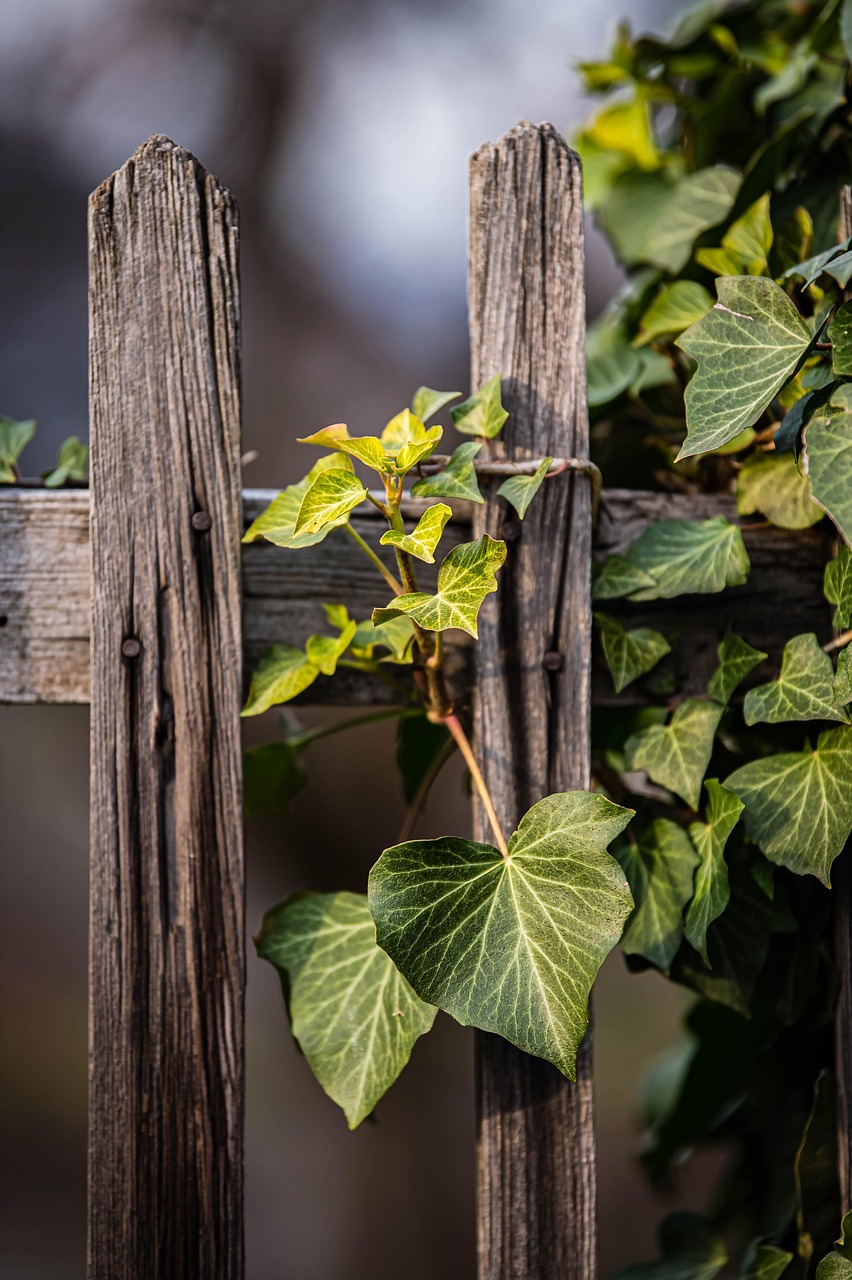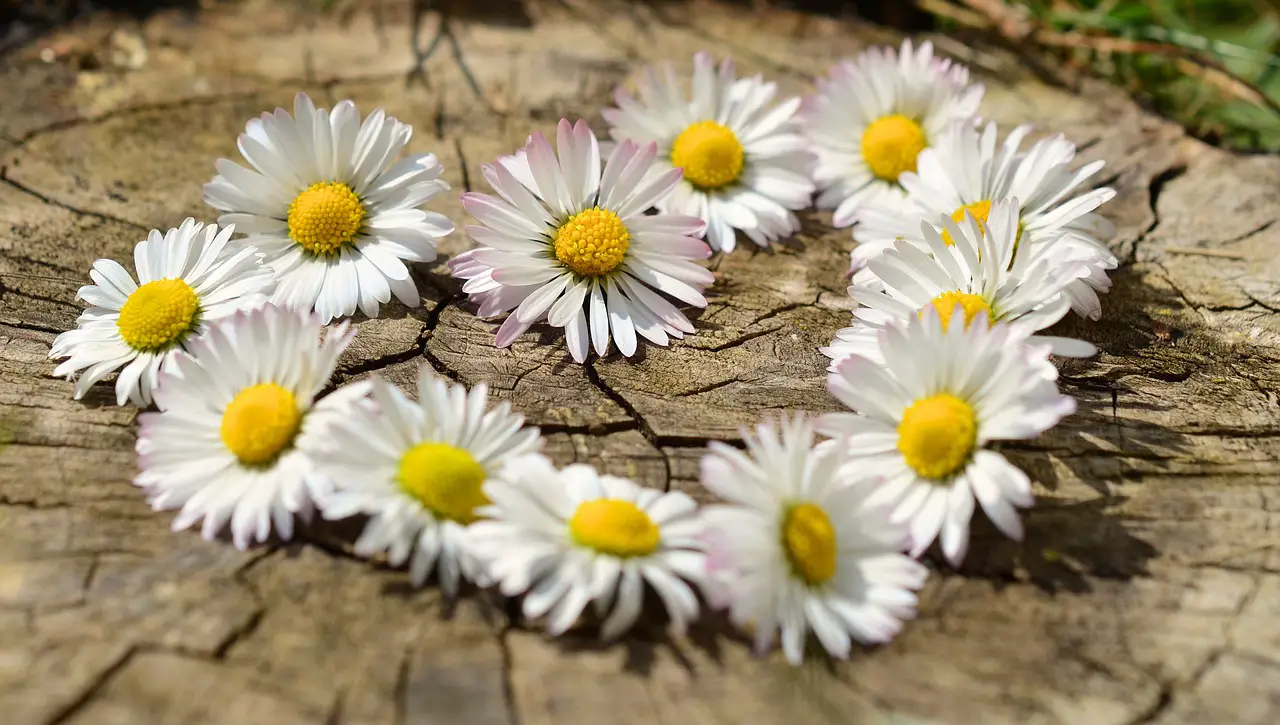Plants with heart-shaped leaves are not only visually appealing but also symbolize love and affection. These charming plants can bring a touch of warmth to any space, making them popular choices among plant enthusiasts and decorators alike.
Heart-shaped leaves have captured the hearts of many for centuries. Their distinctive shape is often associated with love, friendship, and compassion. Additionally, these plants come in various sizes and colors, making them versatile options for different environments. Whether you are a seasoned gardener or a novice plant parent, incorporating heart-shaped leaf plants into your collection can add both beauty and meaning.

In nature, the heart shape is often found in plants that have evolved to attract specific pollinators or to thrive in particular environments. Many of these plants are also easy to care for, making them ideal for those who may not have a green thumb. Below are some key characteristics of heart-shaped leaf plants:
| Characteristic | Description |
|---|---|
| Leaf Shape | Distinctive heart shape, often rounded and symmetrical. |
| Color Variations | Available in various shades, including green, variegated, and even deep purple. |
| Size | Ranges from small houseplants to larger outdoor specimens. |
| Care Requirements | Generally low maintenance; many thrive in indirect sunlight and require moderate watering. |
Popular Plants with Heart-Shaped Leaves
There are numerous plants that feature heart-shaped leaves. Each has its unique charm and care requirements. Below are some of the most popular options that you may consider adding to your collection.
- Philodendron Cordatum: This vining plant has glossy, dark green heart-shaped leaves. It thrives in low light conditions and requires minimal care.
- Hoya Kerrii: Often known as the “Sweetheart Plant,” Hoya Kerrii features thick, succulent leaves that can grow into a beautiful trailing plant. It prefers bright, indirect light.
- Scindapsus aureus: Commonly known as pothos or devil’s ivy, this plant has heart-shaped leaves that can vary in color. It is known for its air-purifying qualities.
- Caladium: Caladium plants are prized for their colorful foliage. Their heart-shaped leaves come in various colors and patterns, adding vibrancy to your garden or home.
Each of these plants offers something special. From the lush green foliage of the Philodendron to the striking colors of Caladium, they all have the potential to steal your heart. Additionally, they are relatively easy to propagate, which means you can share them with friends or expand your collection without much effort.
As you explore the world of heart-shaped leaf plants, consider the ambiance you want to create. Some plants thrive indoors, while others may flourish outdoors in your garden. Understanding their specific needs will help you nurture them effectively and enjoy their beauty for years to come.
The charm of heart-shaped leaves goes beyond aesthetics; they can also serve as a reminder of the love and connection we share with nature. By incorporating these delightful plants into your life, you can create a space that feels warm and inviting.
Caring for Heart-Shaped Leaf Plants
Understanding how to care for heart-shaped leaf plants is essential for their growth and longevity. Each species may have specific needs, but there are common care tips that can help ensure your plants thrive. Below are key aspects to consider when caring for these beautiful greenery.
Light Requirements
Light is one of the most crucial factors in plant care. Heart-shaped leaf plants often prefer bright, indirect light. However, some varieties can adapt to lower light conditions. Here are some general guidelines:
- Bright Indirect Light: Most heart-shaped leaf plants like Hoya Kerrii thrive in bright, indirect sunlight. Placing them near a window with filtered light is ideal.
- Low Light Tolerance: Plants like Philodendron Cordatum can tolerate low light but may grow slower in such conditions.
- Avoid Direct Sunlight: Direct sunlight can scorch the leaves, leading to browning or crispy edges.
Watering Practices
Watering is another critical aspect of plant care. Overwatering is a common mistake that can lead to root rot, while underwatering can cause the leaves to wilt. Follow these watering tips:
- Check Soil Moisture: Always check the top inch of soil before watering. If it feels dry, it is time to water.
- Watering Frequency: Generally, heart-shaped leaf plants require watering every 1-2 weeks, depending on humidity and temperature.
- Use Well-Draining Soil: A well-draining potting mix helps prevent excess moisture retention.
Humidity and Temperature
Heart-shaped leaf plants often thrive in humid environments. They can benefit from higher humidity levels, especially in dry indoor conditions. Consider the following:
- Ideal Humidity Levels: Aim for humidity levels between 40-60% for optimal growth.
- Temperature Range: Most of these plants prefer temperatures between 65°F and 80°F (18°C – 27°C).
- Avoid Cold Drafts: Keep plants away from cold drafts or sudden temperature changes that can stress them.
Propagation Techniques

Propagating heart-shaped leaf plants can be a rewarding experience. Many of these species are easy to propagate, allowing you to expand your collection or share with friends. Here are popular methods of propagation:
Stem Cuttings
One of the simplest ways to propagate heart-shaped leaf plants is through stem cuttings. Follow these steps:
- Select a healthy stem with at least two leaves.
- Cut below a node using clean scissors or pruning shears.
- Place the cutting in water or directly into soil.
- If using water, wait for roots to develop before transferring to soil.
Division
Another effective method of propagation is division. This technique works well for larger plants. Here’s how to do it:
- Carefully remove the plant from its pot.
- Gently separate the root ball into smaller sections.
- Replant each section in its own pot with fresh soil.
By mastering these care and propagation techniques, you can ensure that your heart-shaped leaf plants not only thrive but also continue to multiply, bringing even more beauty into your space.
Common Pests and Diseases

While heart-shaped leaf plants are generally resilient, they can be susceptible to certain pests and diseases. Identifying these issues early can help you take action before they cause significant damage. Below are some of the most common pests and diseases that affect these charming plants.

Pests
Several pests can target heart-shaped leaf plants, causing stress and damage. Here are some to watch out for:
- Spider Mites: These tiny pests thrive in dry conditions. They create fine webbing on the leaves and cause yellowing.
- Aphids: Small, soft-bodied insects that suck sap from the plants. They can cause curling leaves and stunted growth.
- Mealybugs: These white, cottony pests also suck sap and can lead to sticky residue on leaves.
- Scale: Scale insects appear as small, brown, or white bumps on stems and leaves, hindering the plant’s growth.
Disease Management
Diseases can also affect heart-shaped leaf plants, often resulting from improper care. Here are some common diseases to be aware of:
- Root Rot: Caused by overwatering, root rot leads to wilting and yellowing leaves. Ensure proper drainage and avoid waterlogged soil.
- Powdery Mildew: This fungal disease appears as a white powdery substance on leaves, often due to high humidity and poor air circulation.
- Leaf Spot: Leaf spots may arise from bacterial or fungal infections. They appear as dark brown or black spots on foliage.
Tips for Prevention and Treatment
Preventing pests and diseases is crucial to maintaining healthy heart-shaped leaf plants. Here are several strategies to keep your plants thriving:
Regular Inspection
Frequently check your plants for any signs of pests or disease. Early detection can make treatment more effective. Look for:
- Discoloration or wilting leaves
- Visible pests on the leaves or stems
- Unusual sticky residues on the plant surface
Proper Watering Practices
Watering correctly is vital for preventing root rot and other diseases. Follow these practices:
- Use pots with drainage holes to allow excess water to escape.
- Avoid letting plants sit in standing water.
- Adjust your watering schedule based on the season and humidity levels.
Nutrient Management
Providing the right nutrients can boost plant immunity. Consider these tips:
- Use a balanced liquid fertilizer during the growing season.
- Avoid over-fertilizing, which can cause nutrient burn.
- Ensure that the soil has the right pH level for optimal nutrient absorption.
Decorating with Heart-Shaped Leaf Plants
In addition to their care requirements, heart-shaped leaf plants can enhance your home’s aesthetic appeal. Their unique shapes and lush foliage make them perfect for various decorative arrangements. Here are creative ways to incorporate them into your decor:
Indoor Displays
Heart-shaped leaf plants can create inviting indoor spaces. Consider the following ideas:
- Potted Plants: Place them in decorative pots that complement your interior decor style.
- Hanging Baskets: Allow trailing varieties like Hoya Kerrii to cascade from hanging baskets in bright areas.
- Shelves and Tables: Group different heart-shaped plants together on shelves or tables for an appealing display.
Outdoor Gardens
If you have outdoor space, heart-shaped leaf plants can add beauty to your garden as well. Here are some suggestions:
- Garden Borders: Use Caladiums in garden borders for vibrant colors and texture.
- Container Gardens: Create container gardens with a mix of heart-shaped plants and other complementary species.
- Shade Areas: Position shade-loving varieties in areas with filtered sunlight to enhance your landscape.
By understanding both care and decorative aspects, you can enjoy the beauty of heart-shaped leaf plants while creating a welcoming atmosphere in your living spaces.
Additional Benefits of Heart-Shaped Leaf Plants
Beyond their aesthetic appeal, heart-shaped leaf plants offer numerous benefits that enhance their desirability. These plants can contribute positively to your living environment in several ways:
Air Purification
Many heart-shaped leaf plants are known for their air-purifying qualities. They can help remove toxins from the air, improving the overall air quality in your home. Some popular choices include:
- Pothos (Scindapsus aureus): Effective at filtering indoor air pollutants such as formaldehyde and benzene.
- Philodendron: Known for removing various toxins, making it a great choice for bedrooms and living spaces.
- Hoya: Besides its beauty, it helps in improving air quality and is relatively low-maintenance.
Mental Well-Being
Having plants indoors can significantly improve mental well-being. Studies suggest that being around greenery can reduce stress, enhance mood, and increase productivity. Heart-shaped leaf plants, with their unique shapes and vibrant colors, can create a calming atmosphere. Here are some ways they contribute to mental health:
- Connection to Nature: Bringing plants indoors allows individuals to stay connected with nature, which can be grounding and comforting.
- Enhanced Creativity: The presence of plants can stimulate creativity and inspiration, making them ideal for workspaces.
- Improved Focus: A green environment can aid concentration and focus, particularly when studying or working from home.
Educational Opportunities
Caring for heart-shaped leaf plants can also serve as an educational experience. They provide an excellent opportunity to learn about plant biology, growth cycles, and the importance of ecosystems. Engaging with plants can foster a deeper appreciation for nature and the environment. Some educational aspects include:
- Botanical Knowledge: Understanding plant care, propagation methods, and pest management enhances botanical knowledge.
- Responsibility and Care: Taking care of plants teaches responsibility and the importance of nurturing living things.
- Environmental Awareness: Learning about the role of plants in ecosystems helps develop a sense of environmental stewardship.
Final Thoughts
Heart-shaped leaf plants not only add beauty to your home but also bring numerous benefits that enhance your living environment. Their unique foliage, ease of care, and ability to purify the air make them a perfect choice for both novice and experienced plant enthusiasts. With various species to choose from, there is a heart-shaped plant suitable for every space, whether indoors or outdoors.
Caring for these plants allows you to engage with nature and create a vibrant atmosphere that nurtures well-being. From their air-purifying capabilities to the joy they bring through their beautiful shapes, heart-shaped leaf plants truly have the power to steal your heart. By exploring different varieties and understanding their needs, you can cultivate a thriving collection that adds life and warmth to any space.
As you embark on your journey with heart-shaped leaf plants, remember that each plant has its personality and requirements. Take the time to learn what works best for your specific environment, and enjoy the process of nurturing these delightful botanicals. Whether you are sharing them with loved ones or simply enjoying them yourself, these plants will undoubtedly become cherished additions to your life.
